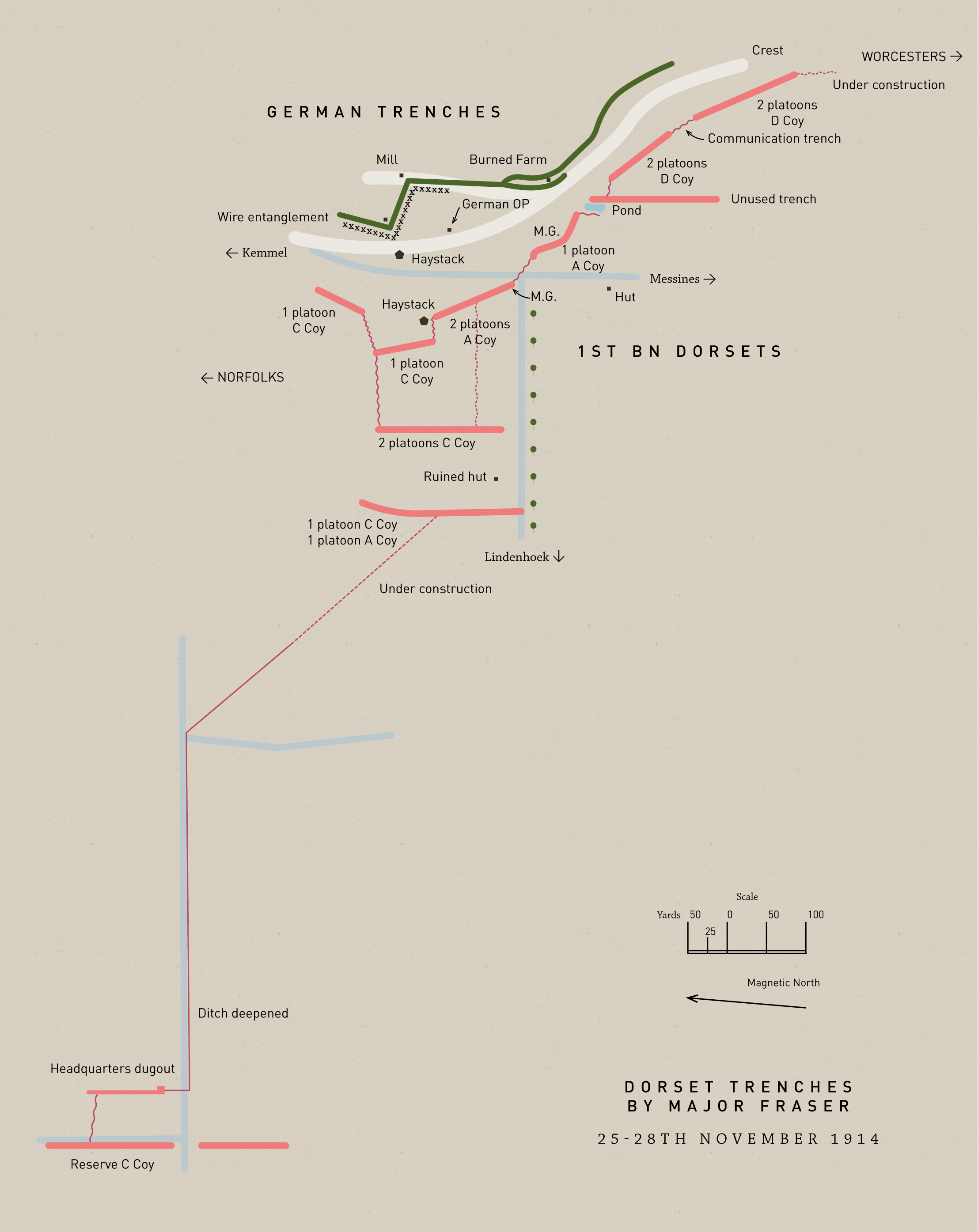### 29th November 1914
Let’s begin today’s post with a deceptively bucolic description of the local terrain by Count Gleichen:
Imagine a bit of rolling country—rather like parts of Leicestershire,—fair-sized fields, separated mostly by straggling fences interspersed with wire (largely barbed), and punctuated by tall trees. Patches of wood in places, spinney size for the most part. Low hills here and there—;Kemmel, Scherpenberg, Ploegsteert Wood,—but all outside our area. For villages, Dranoutre, Neuve Église, Wulverghem, and Lindenhoek, of which the two last were already more than half shot to pieces and almost deserted. Opposite our right was Messines—a mile and a half in front of our line,—its big, square, old church tower still standing; it may have had a spire on the top, but if so it had disappeared before we came. Nearly opposite our extreme left, but out of our jurisdiction and in the sphere of the Division on our left, was Wytschaete (pronounce Wich Khâte), one and a half miles off.
14th Brigade handed over control of the Dranoutre area to 15th Brigade in the morning. All the troops in trenches, including the Manchesters and the East Surreys, came under Gliechen’s command. The 14th Brigade moved with its ambulance and baggage train to Saint Jans-Cappel four miles to the west, just over the border in France. The 15th Brigade had just arrived from there after a short rest. Gleichen stayed with the local Curé…
who liked the good things of this world … and did not disdain to make the acquaintance of an occasional tot of British rum or whisky, except on Fridays.
The Dorsets received orders to gauge the Germans’ strength in front of them. Another quiet day is reported in the diary. The Germans kept them on their toes during the night with two outbursts of rifle fire.
At home the Daily Telegraph reports the war has gone quiet in France and Belgium all along the line.
The newspaper is still banging on about Christmas present ideas for the men. Peppermint lozenges and perfumed soap (bad breath and B.O. being a big no no when hunkered down in a stinking trench) should included be offered as small gifts for those family members who are “maintaining the honour of the Country”.
There are also recipes for feeding wounded soldiers. What they do to a fillet steak possibly breaks the Geneva Convention. After the steak has been hammered flat and fried for 10 to 15 minutes I am sure the men could have used it as a bullet proof vest. Thankfully, a letter from Ethel Jonson offers to set up a society to put recent Belgian refugees* to good use and teach the English to cook. She labels English cuisine as being “lamentably inferior to that of Continental cookery”. Plus ça change.
*Did they get tax credits, I wonder?
